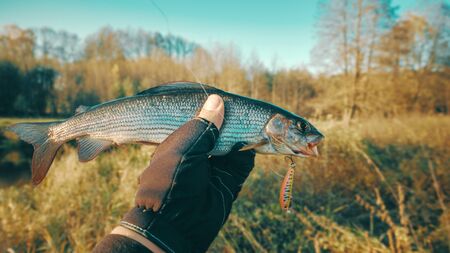Introduction: The Importance of a Proper Fly Reel
When it comes to fly fishing in the UK, selecting the right fly reel is far more than just a matter of personal preference—it’s fundamental to success on British waters. Local rivers, lakes, and lochs present unique challenges, from fast-flowing chalk streams teeming with wild brown trout to powerful Scottish salmon running upstream. British anglers must contend with unpredictable weather, varied water conditions, and an array of native species, making the choice of reel critical. A well-chosen fly reel delivers not only smooth drag and precise control but also durability against the often damp and rugged British climate. Seasoned guides across the country stress that matching your reel’s performance to your target species—be it grayling on the Test or sea trout in Wales—can be the difference between landing a trophy fish or going home empty-handed. In this article, we’ll explore professional recommendations from Britain’s top fishing guides, providing insight into what the pros trust for every scenario across the UK’s diverse fisheries.
2. What British Guides Look for in a Fly Reel
When it comes to choosing the ideal fly reel, professional fishing guides across the UK are meticulous about their preferences. The rivers and lakes of Britain demand reliability, adaptability, and performance under diverse conditions. Here’s an in-depth look at the core features and technical elements that top British guides value most:
Drag Systems: Precision and Reliability
Guides overwhelmingly favour reels with smooth, adjustable drag systems. Whether targeting wild brown trout on a chalk stream or sea trout in a fast-flowing Welsh river, control over line tension is paramount. Disc drag systems are especially popular for their consistency and stopping power, while click-and-pawl designs still hold favour among purists fishing lighter setups.
Comparison of Drag Types
| Drag Type | Preferred For | Main Advantages |
|---|---|---|
| Disc Drag | Larger fish, varied waters | Smooth resistance, easy adjustment, reliable stopping power |
| Click-and-Pawl | Small streams, traditional angling | Simplicity, lightweight, tactile feedback |
Weight: Balancing Comfort and Performance
The weight of a fly reel directly impacts casting comfort and fatigue levels during long sessions on the water. British guides typically opt for reels that balance well with modern lightweight rods but retain enough heft to counter strong winds common across the UK’s open waters. A well-balanced setup ensures precise casting and reduces strain during a full day’s guiding.
Durability: Built to Withstand British Weather
The unpredictable British climate—rain, mist, and even sudden sunshine—demands reels made from robust materials such as machined aluminium or high-grade composites. Guides seek corrosion-resistant finishes and sealed internals to ensure their kit stands up to both freshwater and occasional saltwater use without compromise.
Key Technical Features Valued by UK Pros
| Feature | Why It Matters in the UK |
|---|---|
| Large Arbor Design | Faster line retrieval—vital when playing hard-fighting fish or controlling slack in strong currents. |
| Sealed Bearings/Drag | Prevents ingress of grit and water; ensures reliability even after unexpected downpours. |
| User-Friendly Maintenance | Simplifies cleaning after muddy sessions or coastal outings. |
| Back-Up Spool Options | Allows quick changes between floating and sinking lines depending on water conditions. |
By focusing on these essential features—drag system performance, balanced weight, and durable construction—British fishing guides ensure they’re always equipped for the unique challenges presented by local fisheries. Their insights provide valuable guidance for anglers seeking both reliability and a tactical edge out on the water.
![]()
3. Top Fly Reel Brands and Models Favoured in the UK
When it comes to fly reels, British fishing guides are renowned for their discerning choices, blending tradition with modern innovation. After years of guiding on rivers like the Test and the Tweed, pros have developed clear favourites among brands and models—choices shaped by reliability, performance, and suitability for British waters.
Hardy: The Quintessential British Choice
No discussion of UK fly reels is complete without mentioning Hardy. Based in Alnwick, Northumberland, Hardy has been a stalwart of British angling since 1872. Guides consistently recommend the Hardy Ultradisc Cassette for its lightweight design, quick-change cassette system (ideal for swapping lines when conditions shift), and bulletproof drag. For those who appreciate heritage, the Hardy Marquis LWT remains a classic, combining traditional aesthetics with contemporary engineering—perfect for chalkstream purists.
Greys: Balancing Value and Performance
The Greys brand, also hailing from the UK, is prized by guides seeking robust reels at a sensible price point. The Greys Tail series is particularly favoured for its smooth drag and large arbor design, allowing for rapid line retrieval when playing powerful wild trout or grayling. British guides often highlight Greys as a top pick for anglers new to the sport or looking to upgrade without breaking the bank.
Orvis: Trusted by Pros Across Britain
Though an American brand, Orvis reels have found a devoted following amongst British professionals. The Orvis Hydros stands out due to its sealed drag system—essential for resisting grit and moisture during unpredictable UK weather—and versatile weight options suitable for anything from small streams to salmon beats. Guides value Orvis’s after-sales service and durability, making it a reliable choice for both guiding work and personal use.
Sage: For Technical Waters and Demanding Anglers
Sage reels such as the Spectrum LT are popular among guides who tackle technical fisheries where precision matters. Their ultra-smooth drags and light builds are especially appreciated on challenging rivers like the Itchen or Welsh Usk, where delicate presentation can make all the difference.
Why These Reels Make the Cut
Ultimately, British guides prefer these brands and models because they blend resilience with refined performance under typically unpredictable UK conditions. Whether stalking wild brown trout in Scottish lochs or swinging flies for sea trout in Welsh estuaries, these reels have proved their mettle time and again. Guides emphasise that investing in proven gear pays dividends in both enjoyment and success on the water.
4. Matching Your Reel to Classic British Waters
Choosing the right fly reel is not just about brand or aesthetics—British fishing guides stress the importance of matching your gear to the character of local waters. Whether youre casting on a tranquil chalk stream, tackling a windswept loch, or battling the currents of a powerful river, technical adjustments are crucial for optimal performance. Below is a breakdown of typical British fishing scenarios and expert recommendations for reel selection and setup.
| Water Type | Recommended Reel Features | Technical Adjustments |
|---|---|---|
| Chalk Streams (e.g., River Test, Itchen) | Lightweight, small-arbour reels with precise drag systems | Use fine tippets and adjust drag to the lightest setting to protect delicate leaders; quick retrieve not essential but smoothness is critical for gentle presentations |
| Lochs (e.g., Loch Leven, Loch Lomond) | Medium-arbour reels with higher capacity for backing and corrosion-resistant materials | Set drag slightly higher for windier conditions; ensure spool can accommodate longer casts and potential runs from larger wild trout or pike |
| Powerful Rivers (e.g., River Tweed, Dee) | Large-arbour reels with robust drags and high line retrieval rates | Increase drag strength to control hard-fighting salmon or sea trout; opt for sealed drags for wet conditions and quick access to extra backing |
British guides also advise anglers to consider the heritage of certain fisheries: classic split-cane rods paired with vintage-style reels may be preferred on some estate waters. However, technical performance remains paramount—adjusting your reel’s drag tension and retrieve rate according to water flow and target species can make the difference between landing a trophy catch or watching it slip away. Ultimately, understanding the nuances of Britain’s varied waters will help you select equipment that not only honours tradition but also gives you a competitive edge.
5. Guide-Endorsed Tips and Maintenance Advice
Pro Strategies for Reel Longevity
Seasoned British fishing guides stress that a well-maintained fly reel is the backbone of consistent angling performance, especially along Britain’s unpredictable rivers and coasts. Their expert advice goes beyond simple care, focusing on tailored routines that withstand the UK’s famously variable weather.
Cleaning Routines for British Conditions
Guides recommend rinsing your reel with fresh water after every outing, particularly if you’ve been casting in brackish estuaries or saltwater environments like those found around Cornwall or the Scottish isles. Avoid harsh detergents; instead, use a soft brush to gently dislodge grit and silt—common issues after a rainy day on the River Test or chalk streams. Dry thoroughly with a lint-free cloth to prevent corrosion, which can sneak up during damp British winters.
Weather-Specific Adjustments
With weather shifting from sunny spells to sudden showers, guides advise regular checks on drag systems. In colder months, lubricate moving parts with light oil suitable for low temperatures—this prevents stiffness that could cost you a prized catch during a winter grayling session. Conversely, in warmer conditions, less frequent lubrication is advised to avoid attracting dust and debris prevalent on dry riverbanks.
Storage and Transport Best Practices
British pros often store reels in breathable pouches rather than airtight boxes, reducing the risk of condensation-related damage—a real threat during the misty mornings of spring and autumn. When travelling between beats or lochs, ensure your reel isn’t banging about loose in your kit bag; padded compartments are worth the investment.
Routine Checks and Proactive Repairs
Guides regularly inspect screws, handles, and spools for signs of wear after each trip. Tighten loose fittings promptly and replace any compromised parts before your next cast. This proactive approach ensures your kit remains reliable during those sudden changes in weather that define British fly fishing.
By following these guide-endorsed maintenance tips—shaped by years of experience on British waters—you’ll keep your fly reel performing at its best, ready for whatever the British climate throws your way.
6. Conclusion: Investing in Local Expertise
In the world of fly fishing, the wisdom of British guides stands as an invaluable asset for both newcomers and seasoned anglers alike. Their first-hand experience on diverse UK waters means that their recommendations for fly reels are not only technically sound but also tailored to the unique challenges presented by British fisheries. By tapping into their knowledge, you sidestep common pitfalls—whether it’s selecting a reel with the right drag system for hard-fighting trout or choosing corrosion-resistant models for coastal outings.
Trusting in local expertise does more than just improve your gear selection; it elevates your entire angling strategy. Guides understand subtle factors such as river flows, prevailing weather patterns, and species behaviour that influence reel performance. Their advice often comes from years spent adapting to the ever-changing conditions of Britain’s lakes, rivers, and chalk streams.
Ultimately, investing in professional guidance is about maximising your time on the water. The right fly reel can make all the difference between frustration and flawless casting, lost fish and memorable catches. When you follow the lead of British fishing pros—whose choices are forged through practical experience—you’re not just buying equipment; you’re investing in proven results and a richer, more rewarding fly fishing journey.


